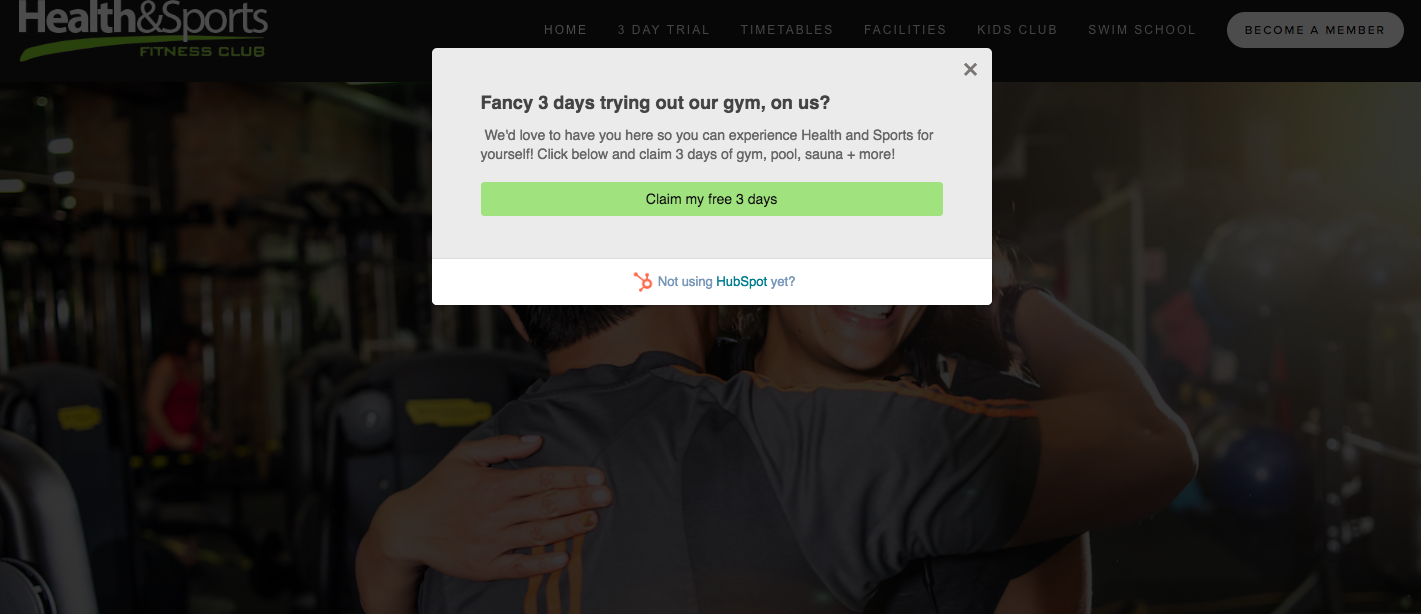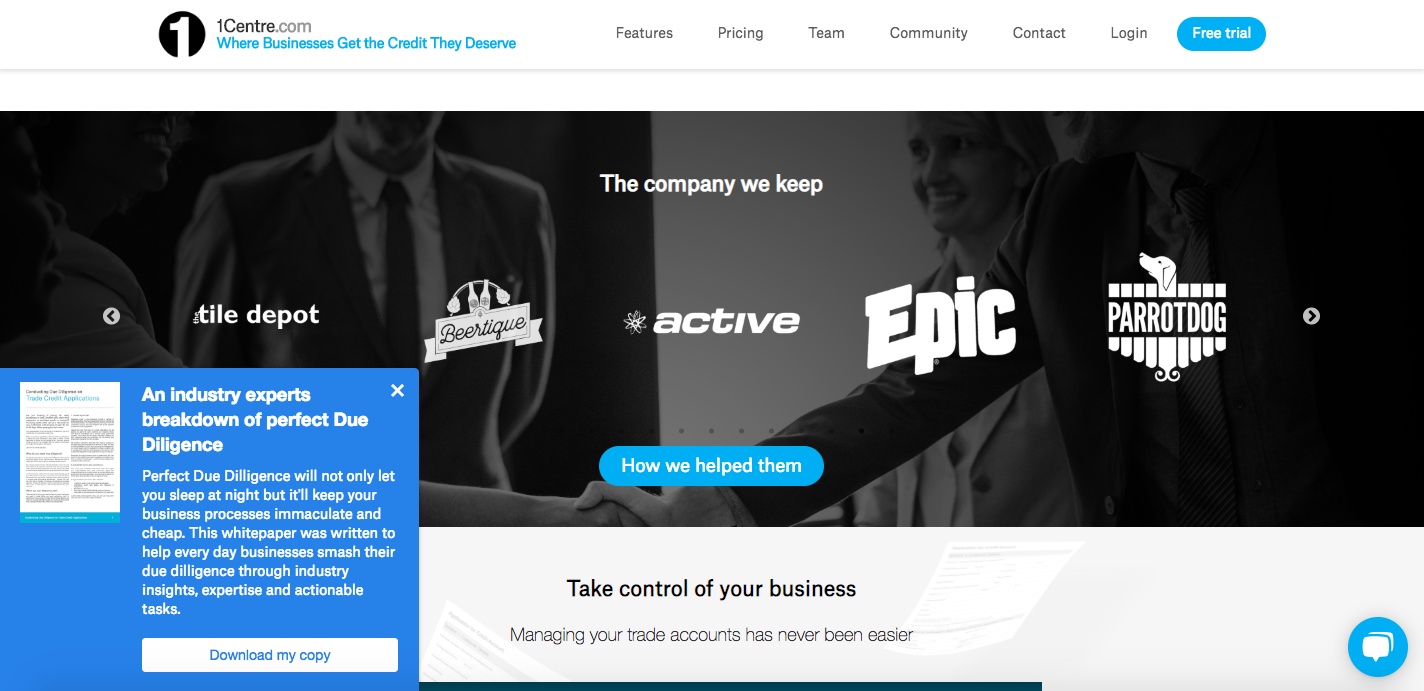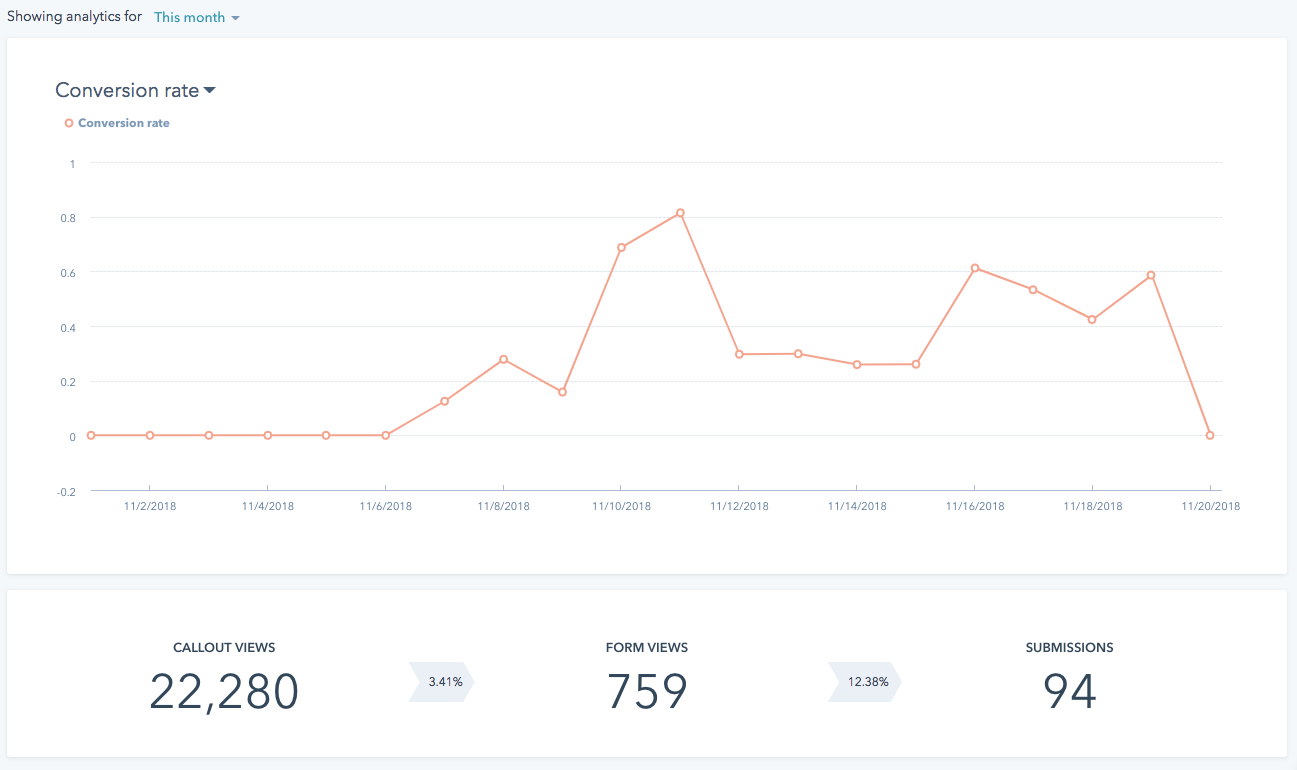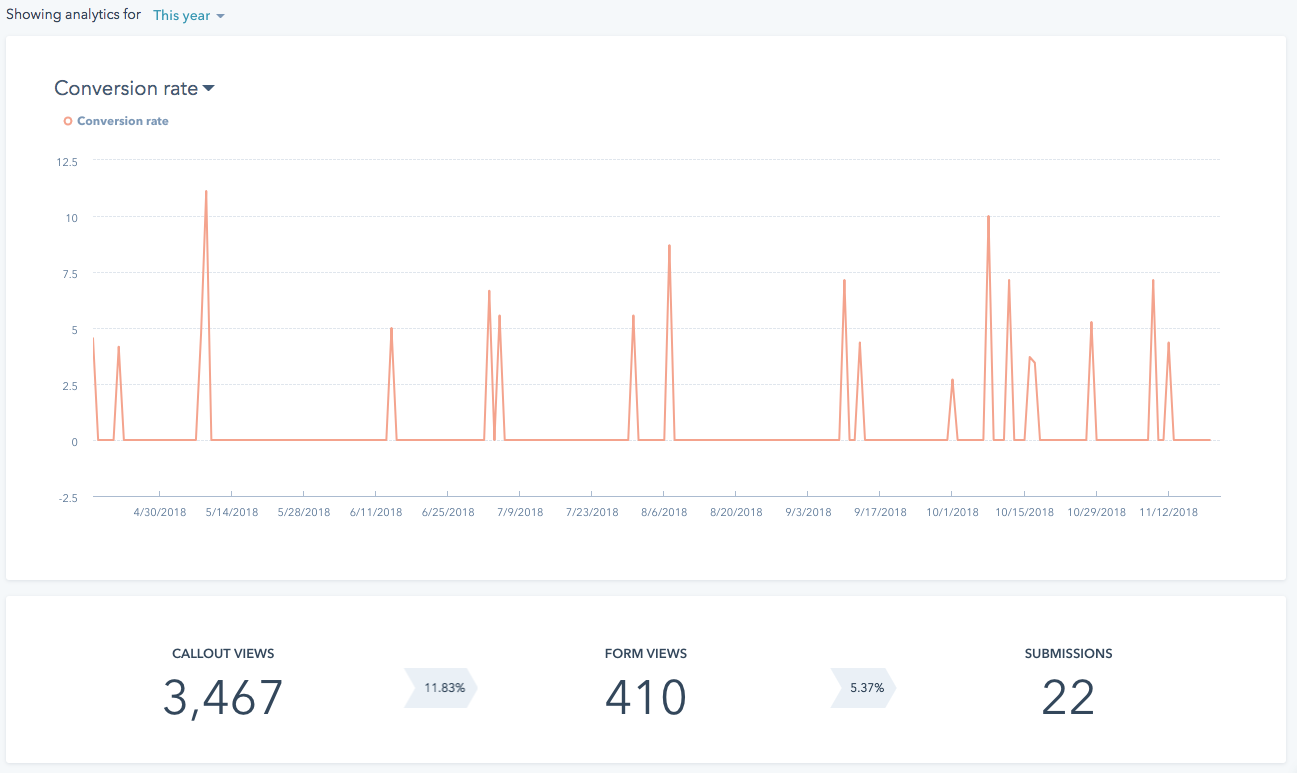Firstly though, what’s the difference?
Well, while a CTA is placed stationary and static throughout your website, Lead Flows are much more intuitive and reactive. A lead flow doesn’t have to be locked to a specific place on the page, in fact, it can exist in multiple different ways. Here are some examples below:
Pop Up Box:

Slide-In Banner:

Both of these are far more engaging than a static CTA. For a start, both appear over the screen, making them stand out a lot more, but even more than that, both are intuitively designed to be triggered by specific actions.
For pop-ups, the most common trigger is known as ‘Exit Intent’, meaning it only appears (or ‘pops up’) when someone makes a move that suggests they are leaving the website (this is usually triggered by a mouse pointer move to the ‘x’ in the corner). This is a brilliant way to capture people who are in the process of leaving, with an offer that may convert them into an interested lead.
For slide in banners, the most common trigger is at 50% page scroll or a specific amount of time on the page. These are less about capturing people who may not see any immediate interest in your website, but rather capturing people who are engaging and may need an extra push to convert.
So, do these work?
Well let’s look at some results:
This is an exit intent pop up we set up for a client one week ago, looking to recapture people to a tool they’d set up, to help them find a product that suited:

In literally one week, we achieved 94 submissions, on our first test of the variant. What’s more, being placed as an ‘exit intent’, this was capturing people who were leaving the website without making an action, meaning they were otherwise, lost customers.
Here is a slide-in we set up for a client a year ago, capturing people with a bit higher intent to a piece of content that was aimed at educating people, still seeking for information:

While the numbers are lower, the quality of lead was incredibly high and this turned into 3 clients (with a large lifetime value). The placement of this lead flow and intuition meant it was engaging people who showed the characteristics of someone who was interested in the product and offering.
So why do Lead Flows work so well?
Outside of the intuition we’ve discussed, a big part of lead flows success can be down to the fact they’re unique. Even more than just the smart nature of their placement and reactiveness, they are something new to a rapidly changing digital scene which is always worth investigating if you’re trying to stay on top of your competition. These are also available on Hubspot’s free plans, meaning they’re a quick win if you’re trying to explore some new territory.
We highly recommend jumping on a Hubspot free plan, there a ton of benefits including these little gems. If you want any help setting it up, we’re always interested in supporting businesses looking to engage with Inbound Marketing software!



